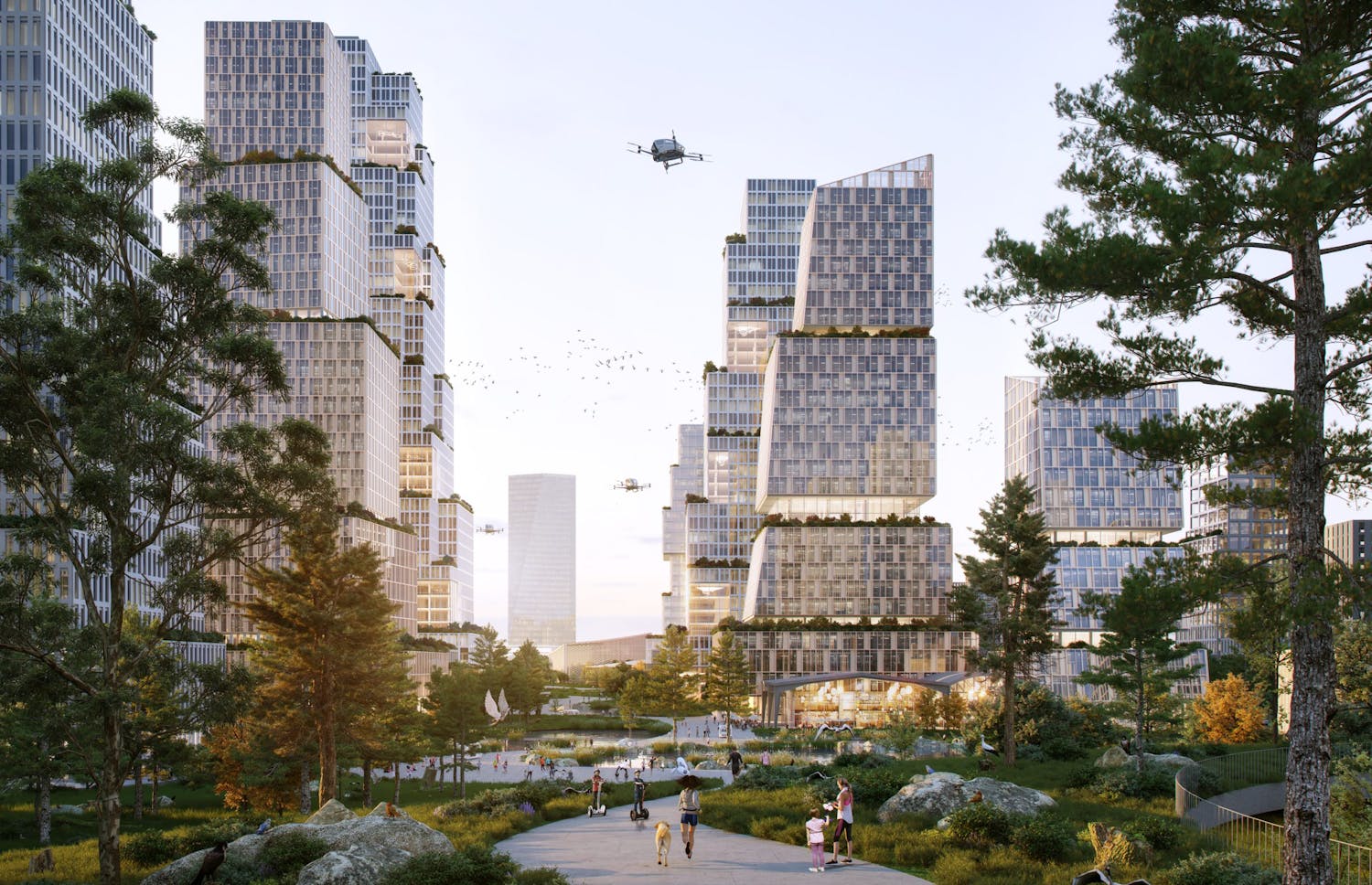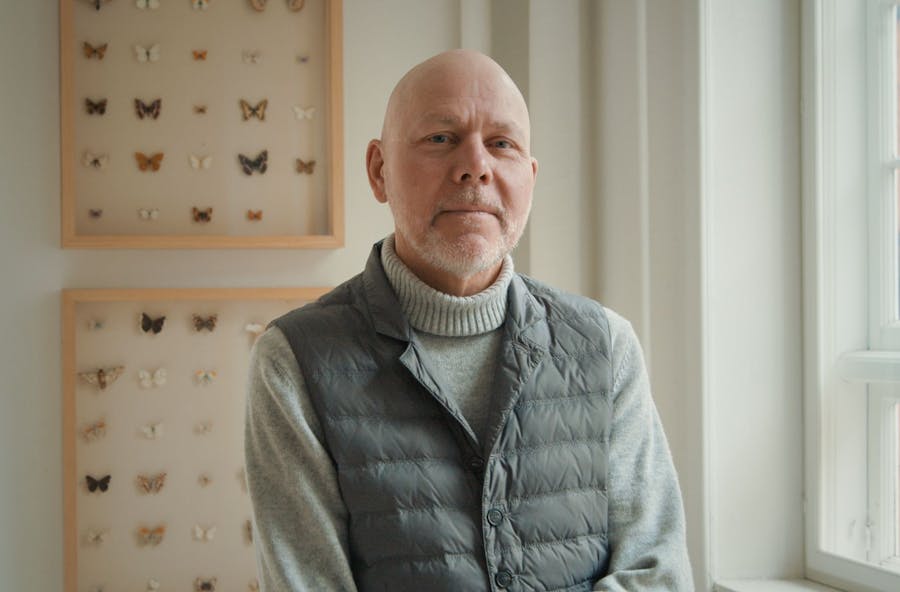25.04.2022
City Nature: It's how it feels and functions. Not how it looks.

Themes such as nature-based design, biodiversity, and green cities are becoming more and more popular. But what do we actually mean when we talk about ‘city nature’ and ‘quality of nature’?
By Stig L. Andersson, Founding Partner of SLA and Professor at the University of Copenhagen and Beijing Forestry University.
These years, the trend in architecture, city planning, and urban development is green. Whatever we do, our cities must become greener and greener.
From my perspective, as someone who has pushed the green agenda for more than 30 years, this is a good thing. However, to be able to create more nature-based cities, we still lack a basic understanding of what nature within the city is – as well as precise definitions of city nature and quality of nature. Without these, the simple ambition to ‘green our cities’ risks doing more harm than good.
City nature is not weed
Contrary to what many people seem to believe, city nature does not refer to all green structures occurring within the city. Stemmed street trees, trimmed lawns, and weeds sprouting between cobblestones are not city nature but tamed green structures subjected to the order of the built environment – or simply a result of poor construction work.
City nature is something we humans design to solve our self-induced urban problems. It is informed by the processes and phenomena of nature. It creates habitats for plants and animal species, thus strengthening and increasing our cities’ biodiversity. Furthermore, it utilizes the ecosystem services of nature to make our cities more sustainable and improve our value of life within them.
But it is not nature. City nature results from a conscious design action, and its success is measured by whether it makes our cities more liveable. Both in terms of ensuring that all species present within them (humans, birds, insects, etc.) can survive. But likewise in terms of ensuring that we all have something to live for.

Quality and the values of nature
This brings us to the second necessary definition: Namely, what is quality regarding the subject of city nature?
The quality of city nature does not depend on what it looks like. Used in this way, this purely perceived quality will be useless and simply act as greenwashing (being utterly dependent on private aesthetic notions of when something “looks right”). And in the worst case, perceived quality will be outright harmful and counteract the beneficial effects that our cities can gain through the implementation of city nature.
But what does then determine the quality of city nature? In SLA, we define a high-quality city nature on whether it performs on four values of nature. The values are equally important and ensure a holistic and broad-performing new nature.
The four values are: biological, social, rational, and aesthetic.
Biological Nature value
Biological Nature Value is about creating space within our cities and societies for ALL life – ranging from plants, animals, and humans to water, skies, bacteria, and jellyfish. We do this because high biodiversity enriches our lives, makes our cities resilient, and makes our societies healthier. And, fundamentally, because preservation and strengthening of the planet’s biodiversity, both aesthetically and ethically, is the right thing to do. We are borrowing the Earth and its resources and must return them in even better condition than when we received them. A city nature that ensures biological diversity is thus imperative.
Social Nature value
Social Nature Value consists of all the positive aspects we humans gain through exposure to city nature. We become healthier, happier, and less prone to stress by living close to nature. Furthermore, we become increasingly social, more active, and experience lower crime rates within nature-based urban spaces. The social and human potential, derived through city nature, is well documented and possesses the additional advantage that it works on everyone, regardless of their social, cultural, or gender-oriented background. City nature must therefore aspire to create better and more social human conditions for every individual within our society – both at individual and societal levels.
Rational Nature value
Rational Nature Value deals with all the ecosystem services we can derive through a well-designed city nature, contributing to increased sustainability of our cities and societies. It deals with aspects ranging from rainwater management and storm surge protection to filtration of air pollutants, regulated thermal conditions, and microclimate optimization. When we design city nature, it is thus not a matter of whether the cities become “beautiful” to look at or live within. Instead, we are correcting 200 years of urban delusions which have separated the built environment from the grown environment. To create coexistence and equality between these two factors – thus making our cities viable for the next 1000 years.
Aesthetic value
The Aesthetic Nature Value of city nature deals with the fact that we as humans are part of nature – that we are nature.
City nature reminds us explicitly of this fact through the provision of deep sensory, physical, and psychological experiences: It is when we hear the birds singing, feel the decay of the trees, smell the fresh air following torrential rain, feel the storm, suddenly see the stars in the sky and physically sense the transience of everything, that we possess the most significant potential of feeling as one with nature.
This sense of cohesion does not simply provide the individual human being with existential satisfaction. We also recognize our place on the planet – and our responsibility for it. Aesthetic city nature thus gives meaning to the life of the individual while simultaneously reminding us of our collective responsibility.
Finally, we know that aesthetic senses that turn into ethical realizations tend to lead to physical action. Through a slightly polemic rewriting of the chaos theory, one could say that the song of a blackbird at Skt. Kjeld’s Square in Copenhagen possesses greater potential for preventing sea-level rise in New York and wildfires in Australia, than many a technical report and political toasts.
Use knowledge wisely – and act!
As must be clear from the above, it is not easy to design such a city nature. Neither is it something that occurs spontaneously if we simply stop maintaining our public spaces. High-quality city nature requires extensive knowledge of biological, anthropological, social, economic, and psychological conditions. Further, it requires design expertise and the artistic ability to condense this knowledge into value-based proposals.
So dear civil society: Congratulation on becoming more aware of the importance of nature in the city. Let us now create a shared understanding of what this new approach to City Nature entails.
And let’s get to work!
Perspectives

Nature is our origin. The city is our forgetting
What if the city isn’t broken because of noise or pollution – but because it has lost its meaning? And what if the true green transition doesn’t start with energy systems but with our senses?
In his new op-ed in Byrummonitor, SLA’s founder Stig L. Andersson argues that the current crisis of civilization – from climate breakdown to mental health — is rooted in how we’ve designed our cities to disconnect us from nature.

Cities are bad for us. Let's fix them
Cities can be inspiring places that bring out the best in us. But they’re often concrete jungles that make us ill and are still designed around the automobile. What if they were places in which you could thrive rather than simply survive? Another model is possible, writes Rasmus Astrup in the December 2024 issue of Monocle.
